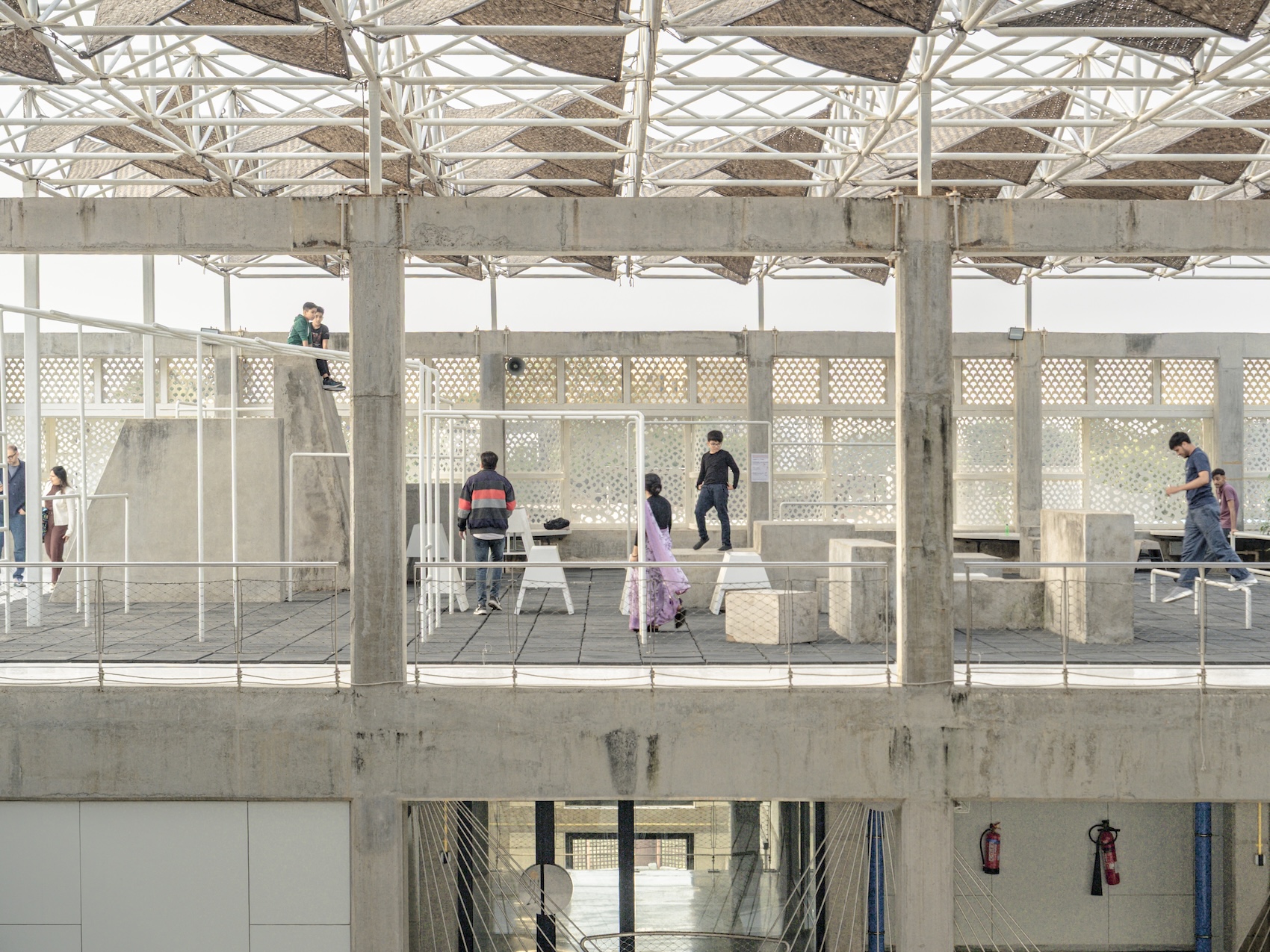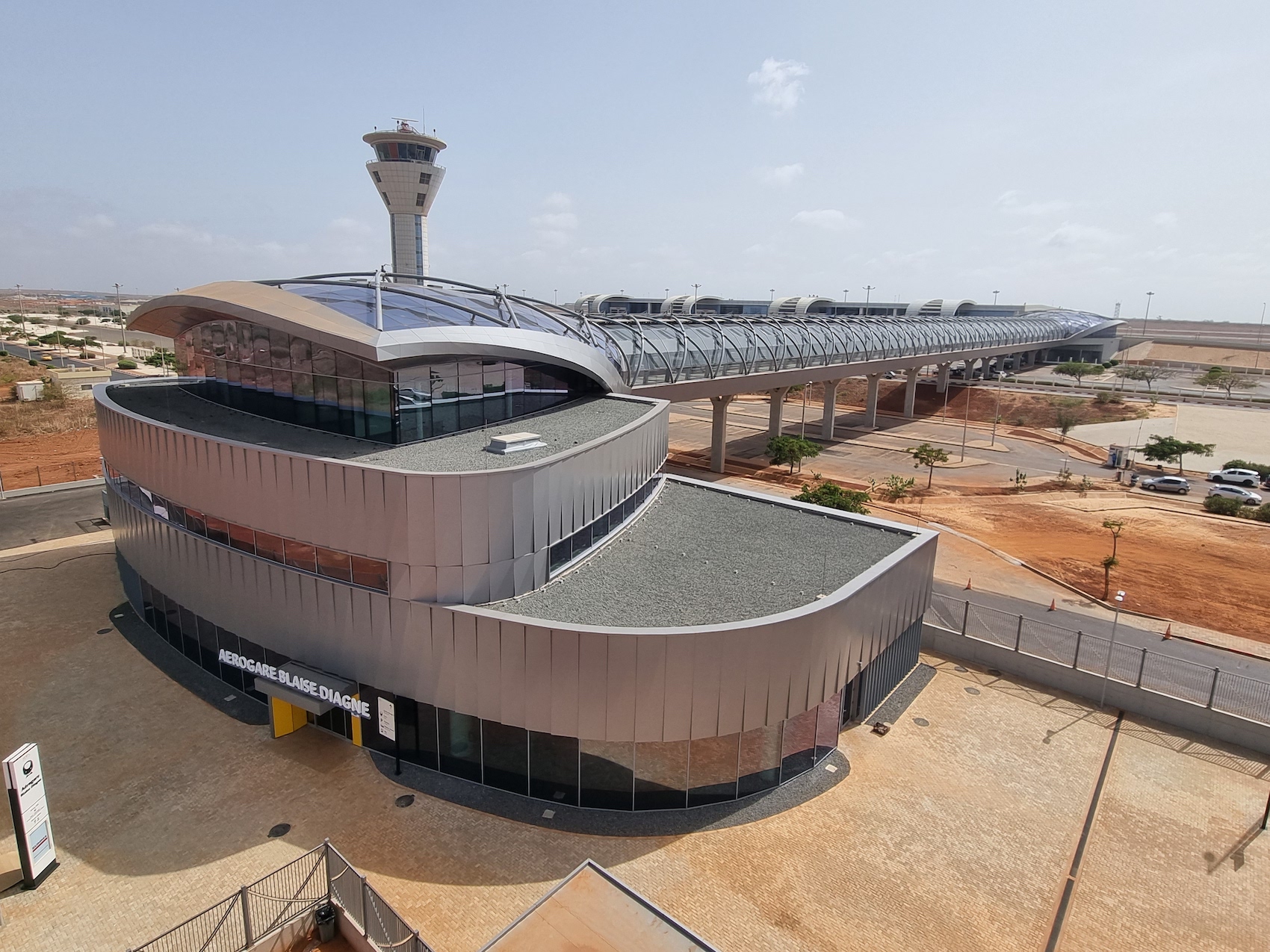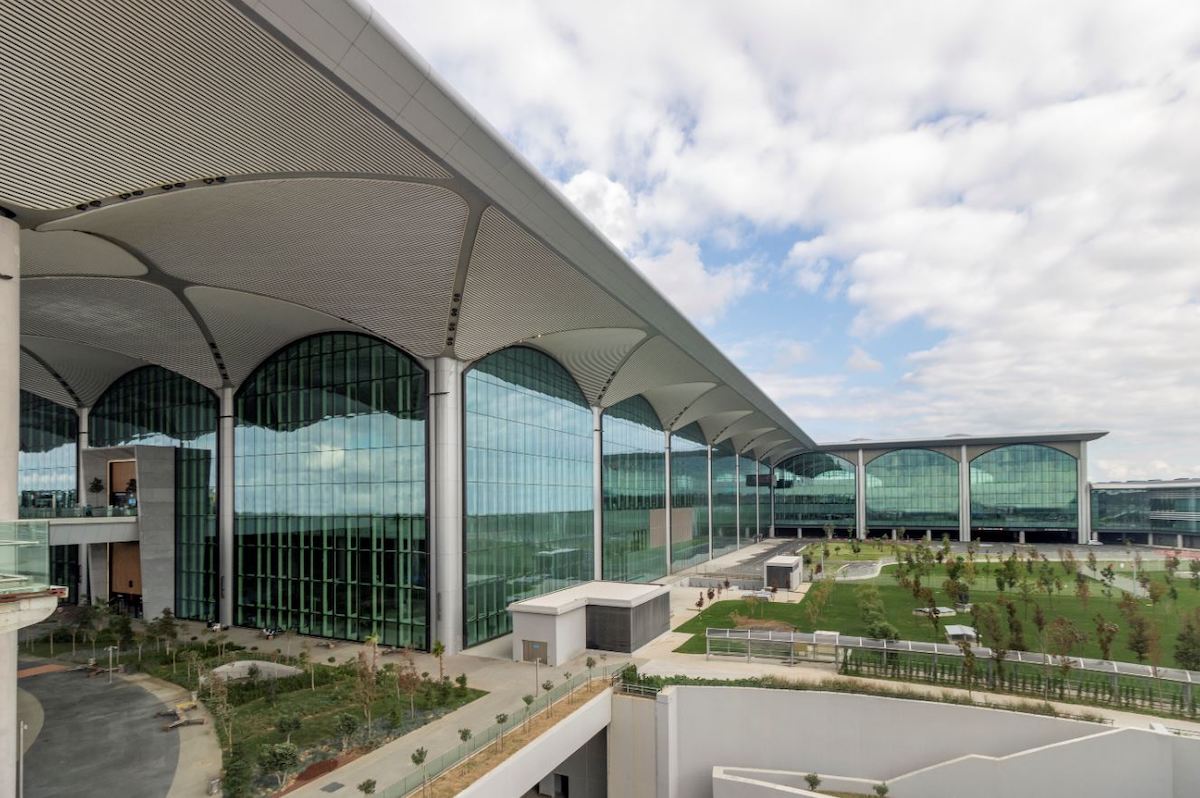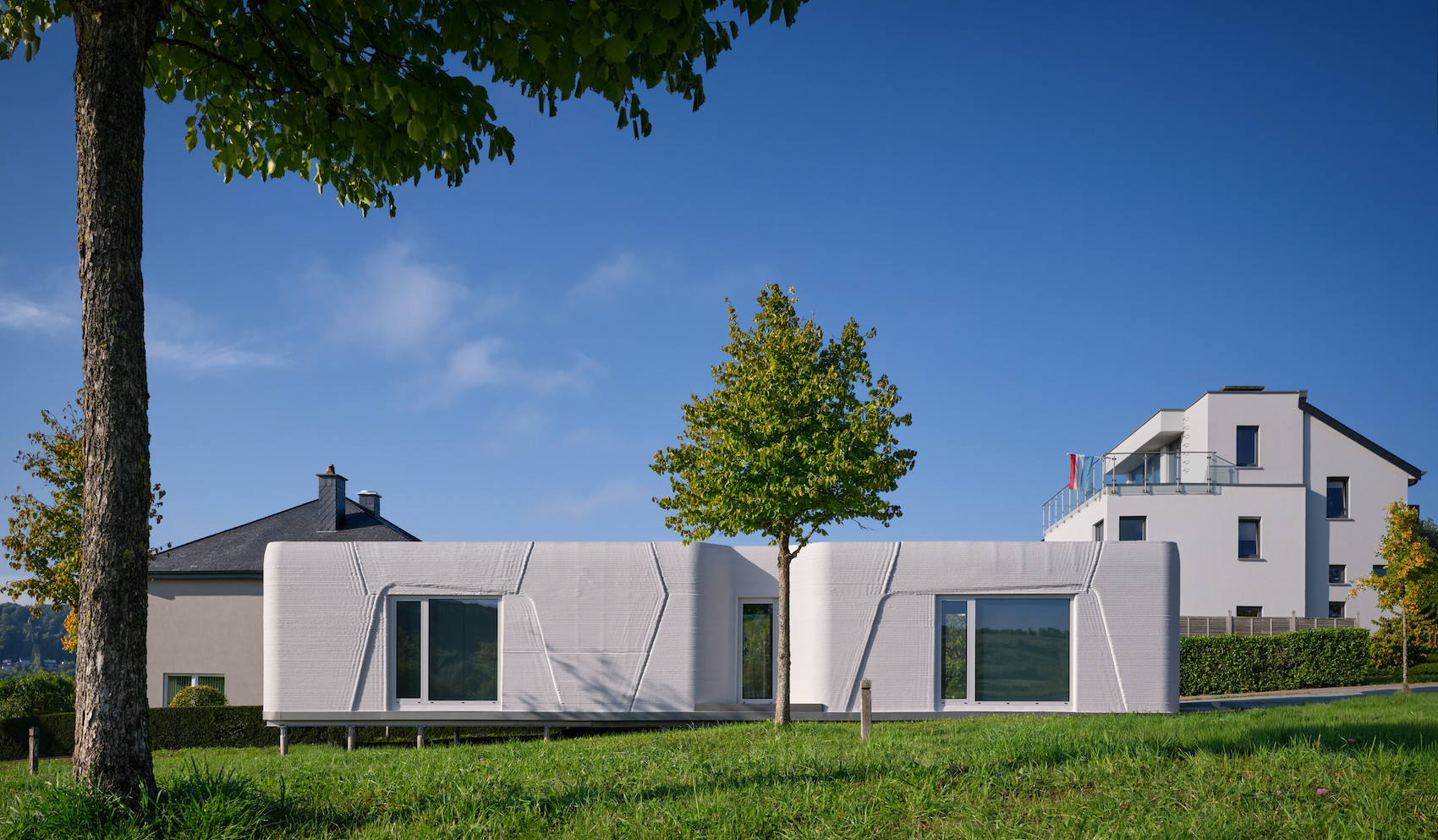Mole Architects and Invisible Studio have built a big barn in the Cambridgeshire Fens to be used as the national base for Forest School Camps.
How do you dry a huge tent? The answer, it turns out, is incredibly similar to how fire hoses were originally dried: hung out inside a tower (of sorts). In Haddenham, Mole Architects and Invisible Studio have designed a big barn that employs just this technique.
It’s a tall order to describe what we have here as a tower – but the seven-metre-high protrusion stands proud of the single-story pitched barn that is the largest structure for quite some distance in this rural setting.
The barn is for Forest School Camps (FSC), an educational charity that takes children from aged six up to teenage years camping in “wild places.”
“The brief was essentially: how much space can we cover for as little money as possible,” Alice Hamlin, associate at Mole told AT.
The timber frame structure makes use of trusses that span 15 metres that allow for objects of all sizes to be easily stored and sourced.
Embracing the local rural vernacular, the barn is black, much like the barns of old nearby that are clad in black timber slats. Here however, cement fibre corrugated sheets have been used, cladding a timber frame structure that lies beneath, punctuated only by a PV array on the roof and transparent corrugated fibreglass sheets that have been used for rooflights and sliding doors.
The barn covers 745 square metres, with much of this space being used to store camping and outdoors adventure equipment. Everything from canoes to jackets, boots, trousers, sleeping bags and rucksacks is stored here – and there’s space too for these items to be repaired. Workshop areas for mending and maintenance have been designed in, alongside a kitchen and dining area and space for volunteer training too.
The brief was also unique in the fact that it called for a building that is, at most, used one weekend a month. “Volunteers were spending a lot of time keeping the building going. Now they can focus on running workshops and the camping experiences,” added Hamlin.
As a result, the building has been kept as simple as possible, with spaces kept paired back and making use of easy-clean finishes such as concrete screed floors, sheet linoleum flooring and ply linings to let the building be easy to run.
Short section through the lantern area of the building.
Bisecting the plan is a space known as the ‘lantern’ – where the big tents are hung out to dry, a process aided by louvres. North of this is a kitchen and dining area, bathroom facilities, a training area and loos, while directly south are repair workshop stations, with both these areas being insulated using recycled newspaper. Further southward is the main storage area, which isn’t insulated, but arranged so that items within this 400 square metre space can be meticulously organised, able to be easily sourced when necessary.
“The ‘Big Roof’ is really simple and draws on our collective appreciation of no-nonsense agricultural structures that are absolutely direct and frugal in their lack of embellishment,” Piers Taylor, director of Invisible Studio said in a statement. “It is a really interesting demonstration of how this type of building can use timber rather than the default option of steel. The change from a steel frame to timber is one of the most beneficial carbon savings it is possible to make in a building, and here – through design – the frame also proved to be cost effective, minimising arguments for using steel.”
Credits
Client
Forest School Camps
Architects
Mole Architects and Invisible Studio
Structural engineer
Built Engineers
Mechanical and engineering
ALH Design
Structural engineer
Built Engineers
Contractor
Millcam
Quantity surveyor
Sherriff Tiplady







































